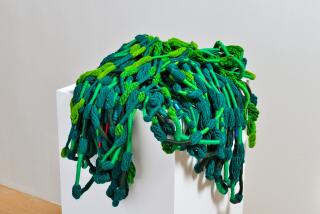‘Art Place Japan’ tracks a triennial’s rural transformations
- Share via
Every three years across the rice fields and around the farmhouses of rural Japan, about 150 miles north of Tokyo, the landscape changes.
One year, an old country house was sheathed in hundreds of circular mirrors — no two the same size, all a reflection of the natural world around them. Another year, canary-yellow poles and flags popped up, re-creating the path of the Shinano River a century ago, before the construction of dams.
One winter, 10,000 buried LED “seeds of light” glowed at night, turning a snowfield into a winter flower field. One summer, hundreds of white shirts fluttered above 21/2 acres of farmland, like ghosts dancing in the wind.
See the most-read stories in Entertainment this hour >>
Ghosts are an apt symbol for the Echigo-Tsumari Art Triennale, which started in 2000 as a project for a region dotted with the abandoned homes and empty schools that reflect an aging, shrinking population. The 2015 installment, which ended in September, was the latest effort to bring pride back to these communities and to celebrate their cultural heritage and rural tradition.
“Art Place Japan,” released this month from Princeton Architectural Press, catalogs more than 200 works created for the event, which has expanded to more than 300 communities across 300 square miles. The introduction by triennial director Fram Kitagawa, essays by Lynne Breslin and Adrian Favell and translation by Amiko Matsuo and Brad Monsma accompany photography of a compelling collaboration, one between artist and community in the most unlikely places.
More to Read
The biggest entertainment stories
Get our big stories about Hollywood, film, television, music, arts, culture and more right in your inbox as soon as they publish.
You may occasionally receive promotional content from the Los Angeles Times.











